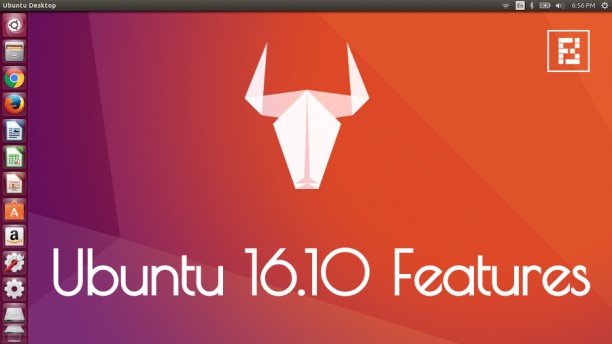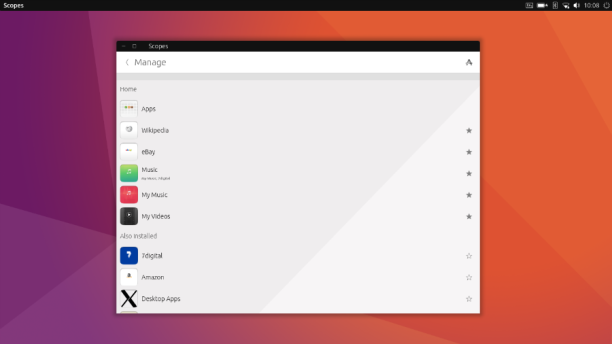Short Bytes: The latest offering from Canonical is the Ubuntu 16.10 Yakkety Yak open source operating system. It comes with the developer preview of the Unity 8 graphical shell and improvement to the Nautilus file browser. Ubuntu 16.10 has been updated with GNOME 3.20 applications and offers Linux kernel 4.8.
Canonical Inc. has released the next major update after Ubuntu 16.04 Xenial Xerus in the name of Ubuntu 16.10 Yakkety Yak. The ISO and torrent files for various Ubuntu 16.10 flavors are available for download and you can install it using the following guide: How To Install Ubuntu 16.10

1. Linux Kernel 4.8

Ubuntu 16.10 ships with Linux Kernel 4.8 out of the box. It brings a number of security features along with major changes to the XFS and Btrfs file systems. It supports Nvidia Pascal and AMD OverDrive for overclocking GPUs using Linux drivers.
The new Linux kernel has given me a sense of satisfaction for my new laptop. I dual-booted it with Mint 17 but the wireless failed to work due to older kernel version which lacked support for 7th gen Intel processors.
2. Nautilus 3.20
The inbuilt file browser in Ubuntu Linux distribution has been updated to version 3.20 in Yakkety Yak. Various bug fixes have been made, for instance, Nautilus was crashing when jp2 images were used as thumbnails in a directory.
The changes to the user interface include a new file shortcuts window which can be found in the files drop down menu. The search has been redesigned with a popover interface where you can find drop-down menu choosing the date and file type as the advanced search options.
3. Extra job for Systemd
The primary task of the Systemd in Linux distros is process management. With the release of Yakkety Yak, an extra job has been given to Systemd. It also does the work of starting the graphical desktop sessions in the latest Ubuntu release. This marks a retirement for the Upstart which is used to handle this task. However, Upstart will still be the driving force behind Unity, hud, and indicators. They are in the process of being converted.
4. Changes to GPG
The GnuPG (GPG) is a software for encryption and managing cryptographic keys. Ubuntu now uses the gnupg2 for the gpg binary. The GPG, developed by the GNU Project, is an implementation of the OpenPGP standard.
5. GNOME 3.20
The GNOME Core Applications in the Ubuntu 16.10 have been updated to version 3.20. Many applications come with version 3.22 and rest of them will be updated soon as the latest release of the GNOME applications collection 3.22.1 has arrived a couple of days ago.
6. Unity 8 Developer Preview
The Ubuntu 16.10 comes with a limited option developer preview of the Unity 8 graphical shell. On the login screen, you can choose between the Unity 8 or the normal one. The Unity 8 comes system settings, command line, web browser, and some applications.
The new graphical shell is in development since the last three years and resembles fundamentals with the Unity Touch present on smartphones and tablets. But the interface is different.
It borrows the Launcher and Scopes from the Ubuntu touch. The developer preview offers and insight to how the Scopes work in the Unity 8 with a revamped command line. There are Snappy Apps which make the update process easier for the developers. Unity 8 also enhances the experience by saying goodbye to the laggy desktop effects which have haunted the Ubuntu users.
7. Updated Apps
- LibreOffice 5.2.2
- Mozilla Firefox 49
- Shotwell 0.22
- GNOME Terminal 3.20
- Thunderbird 45
- Ubuntu Software 3.20
- Rhythmbox 3.4.1
The Ubuntu 16.10 Yakkety Yak is not an LTS release like the Ubuntu 16.04. It will receive a 9-month support until July 2017. You can download the latest Ubuntu 16.10 ISO file from here. Read more about Yakkety on its release notes page.
If you have something to add, let us know in the comments below.
This blog was first published on: https://fossbytes.com/7-best-features-in-ubuntu-16-10-yakkety-yak/









